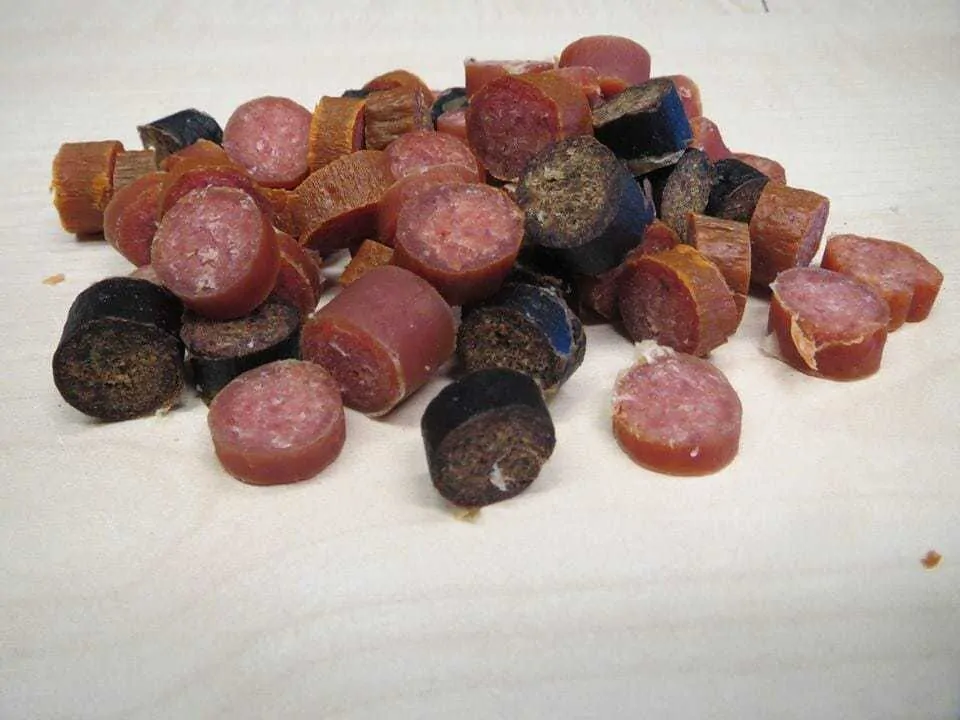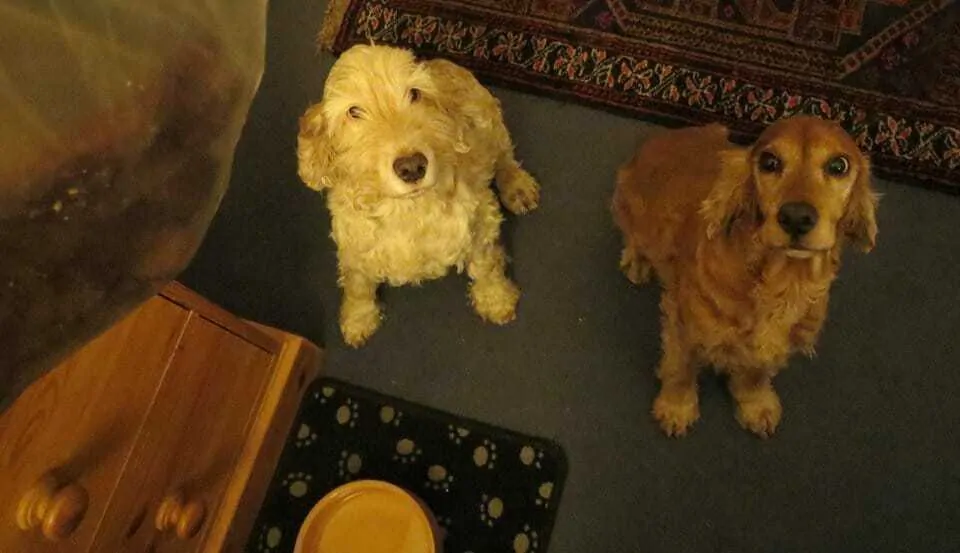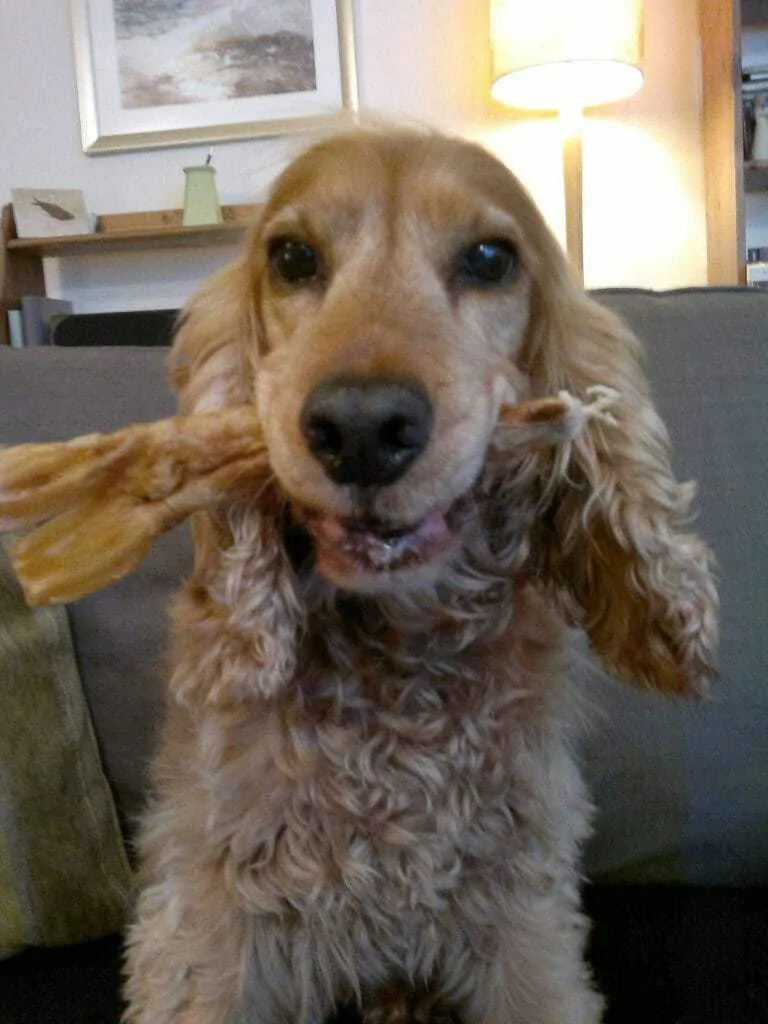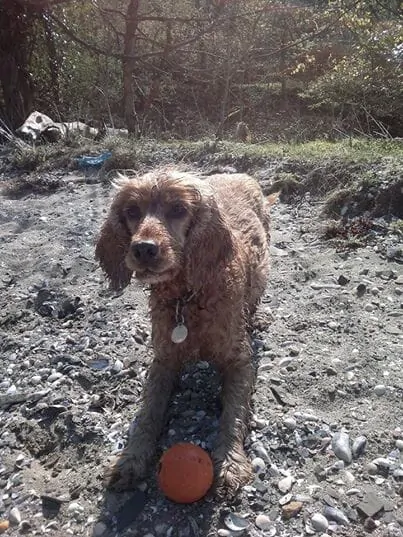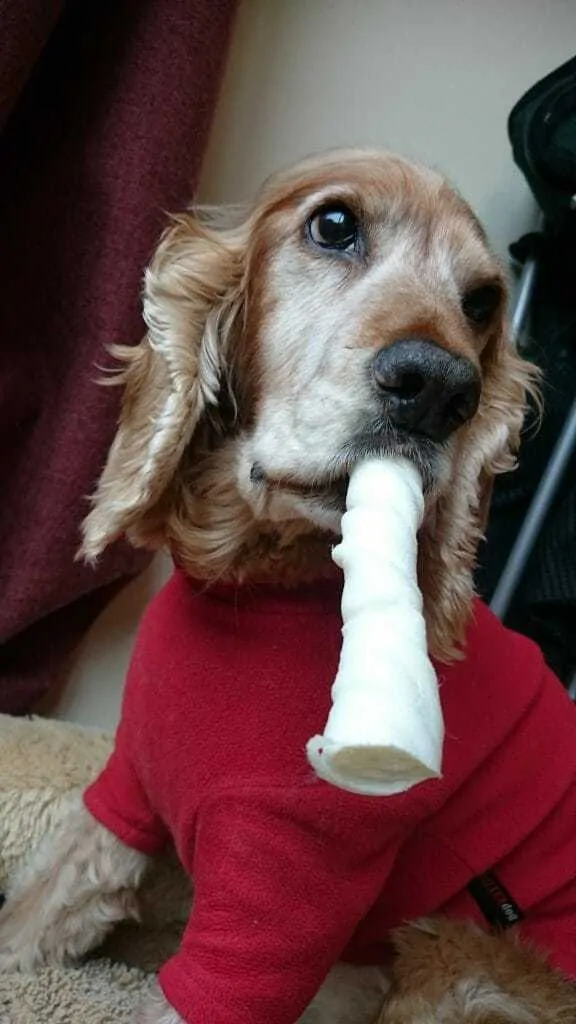Dogs are usually highly food motivated, so using dog training treats to reward a desired behavior is the most common option.
We always advocate the use of positive reinforcement as the best technique for training your dog. Not only is it scientifically proven to be the most effective method, but it also ensures you have a strong and happy bond with your dog.
Some yummy meaty dried sausages chopped into pieces make the perfect dog treats with a high value reward.
Finding the right treat is often the key to keeping your dog engaged and motivated in a training session. Here are some of our top tips for dog treats.
Contents
There is no one “best” treat
So, every dog is different. Some extremely foody dogs will be willing to work for a piece of their kibble or a dry dog biscuit, whilst others will need something much higher value. It also depends on what you may be training. If it is an easier command, that requires less concentration, then a lower value goody dog treats may suffice. If you are doing something that requires your dog to work well under distraction, then picking something that is their dream choice of dog treats is important.
It will be a bit of trial and error at the start to find out what the favorite dog treats are.
Daisy’s eyes say it all. She can’t wait to tuck into these dried beef pieces
Small and often
When training a new behavior the rate of reinforcement has to be high to speed up the learning process. Basically you are going to be giving lots of dog treats. So, we always recommend choosing something small so your dog doesn’t fill up too quickly.
Often we hear people saying “but my dog will get fat if I have to use dog treats for training”. If you keep the training treats small and healthy this will not happen. You may even want to cut back their meal portion slightly if you are using a lot of treats. Also, once you have taught the desired behavior, the food rewards can be phased out and the rate of reward can be reduced.
The Squidgier and Smellier, the better
Usually if something is soft and stinky it will be something your dog will like more. Annie is a great fan of hotdogs. Not great for the pockets, but perfect for keeping your dogs attention. If you have large and crunchy dog treats, sometimes your dog can get more easily distracted. If it takes a long time to eat or they are busy picking up the crumbs from the floor, they are not focusing on offering the desired behavior.
One of our favorite dog treats in the UK are the Meatlove sausages. Made from 100% meat these training treats are very soft and smelly but also easy to cut into tiny little training cubes. High value, healthy and tasty – the perfect combo for training treats!
The Meatlove Meat & TrEat Sausages are very high value, healthy and chop up into neat, bite sized pieces – perfect for training and a favorite with my dogs
DIY Dog Training Treats
Sometimes, making your own can be fun, cheaper and can allow you to experiment with textures and tastes for your dog. It is also a good option if your dog has allergies or intolerances.
Probably the most popular option for homemade and high value training treats is liver cake. There are lots of recipes available online but, be warned, your house will not smell the same for days. You may not want to have a dinner party after a day of cooking this for your dog!
My attempt at making some Halloween themed lamb liver treats – the dogs loved them but didn’t care if they were bat or pumpkin shaped!
Sometimes dry is better
Okay, so we said soft and squidgy is good but these dog training treats are not always practical. If you always want to have some training treats in your dog walking coat, a stinky pile of smush is not ideal. Soft training treats can often dry out when left unused for a long time. Think about dry options that your dog likes too. My dog Annie loves a dried sprat, a small air dried fish. They are still smelly but they work as a pocket treat.
Annie’s favorite – dried Sprats. A bit whiffy but nice and healthy
Variety is key
Even if you find training treats that you think is your dog’s absolute favorite, it is important not to overdo it. One of my favorite foods is cheese but I would get bored eating it all the time – the same is true for your dog . To keep their interest, it is important to change things up and always have different options available when doing a training session.
Have a hierarchy of treat rewards
Work out what your dog will work for and what they work for most enthusiastically.
My previous dog Daisy would work, on easy tasks, for little cubes of carrot. This was ideal as they are low fat, inexpensive and great for having in my pocket Annie, my current dog, hates carrot so this is a non starter.
If I was training something a little more challenging, I would use an air dried meaty training treat, a little higher in value but still good for the pocket.
For more challenging work again, peanut butter or cheese was a favorite and then some liver cake or fresh chicken was a top choice for training treats.
Figure out what your dog loathes, likes and loves and then use these carefully depending on the task you are training and where you are working on it.
If you are working on recall in your garden you can usually use a lower value treat. But in a field outside, full of new and exciting smells and distractions, you are going to have to offer a much more motivating training treats to encourage your dog to come back to you.
If I needed to get Daisy settled in a new space I would always pick a beef paddywhack – she would do anything for them!
When long lasting treats are important
Yes, we did say small and often but, sometimes, you may be working on training something with your dog when longer lasting treats may be useful. For example, you may be wanting them to settle in their crate and giving them something that will keep them distracted for longer without the need for you to be constantly rewarding them. That is when a filled Kong toy or a tasty chew with peanut butter may be useful. If you are going with a chew rather than a Kong, don’t leave your dog unsupervised.
Getting ready to stuff some Kongs
Healthy Dog Treats
Healthy dog treats are also important so you don’t fill your dog with junk food. Depending on your dog’s diet, try a grain free or freeze dried dog treat to reward your dog.
It is not just treats that dogs will work for
Don’t forget that there are other things that can be reinforcing for your dog. Some dogs will work well for a ball or another favourite toy, sometimes praise is enough. Working out what and where your dog will work for is important. Both, Annie and Daisy love a ball and it really helps with their recall training. One of our favourites is the Chuckit Ultras. They are a little bit more expensive but, as long as you are not prone to losing them, they are very durable and very bouncy.
Daisy had a great recall if there was a ball involved
Choose a good treat pouch
Having a good treat pouch is really handy. It saves your pockets becoming a smelly and sludgy mess, it means that you can access the treats quickly and easily, it is something your dog will start to associate with a training session and they will know that means something good and you are likely to get better focus.
There are lots of good treat pouches on the market. We prefer one that has an adjustable belt strap, the ones with a clip over the belt option can fall off. We also like one that has an easy open and close top. Pick one that has an easy to clean liner too.
I use the Doggy Dobby treat pouch, not to expensive, I can also fit phone and keys in it and it has lasted well.
Have fun
So get out there, start training with your dog, experiment with what they will work for and don’t forget to change it up!
For more useful information on training techniques and treat rewards we would recommend our guide on homemade dog treats.
Daisy enjoying a yummy chew

Jen Jones is a professional dog trainer and behavior specialist with more than 25 years of experience. As the founder of ‘Your Dog Advisor’ and the ‘Canine Connection’ rehabilitation center, she applies a holistic, empathetic approach, aiming to address root causes rather than merely treating symptoms.
Well known for her intuitive and compassionate approach, Jen adopts scientifically-proven, reward-based methods, encouraging positive reinforcement over punishment. Jen specializes in obedience training, behavior modification, and puppy socialization. Her innovative methods, particularly in addressing anxiety and aggression issues, have been widely recognized. Jen has worked with many of the world’s leading dog behaviorists and in her free time volunteers with local animal shelters and rescue groups.
